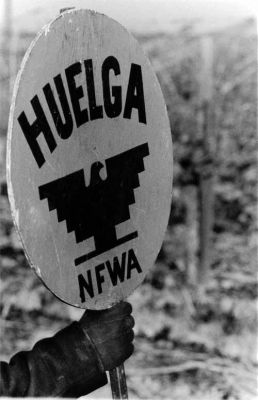A Jon Lewis Photo Exhibit: “1966: Cesar Chavez and his NFWA”
“IT WAS A GREAT PRIVILEGE TO HAVE BEEN ABLE TO PHOTOGRAPH STRONG MEN AND WOMEN STANDING. I’M PROUD TO HAVE STOOD WITH THEM.” – Jon Lewis 1938-2009
This exhibit is a public tribute for the work of Jon Lewis (1938-2009) and an acknowledgement of how much his artistry contributed to Cesar Chavez and his farmworker movement.






























